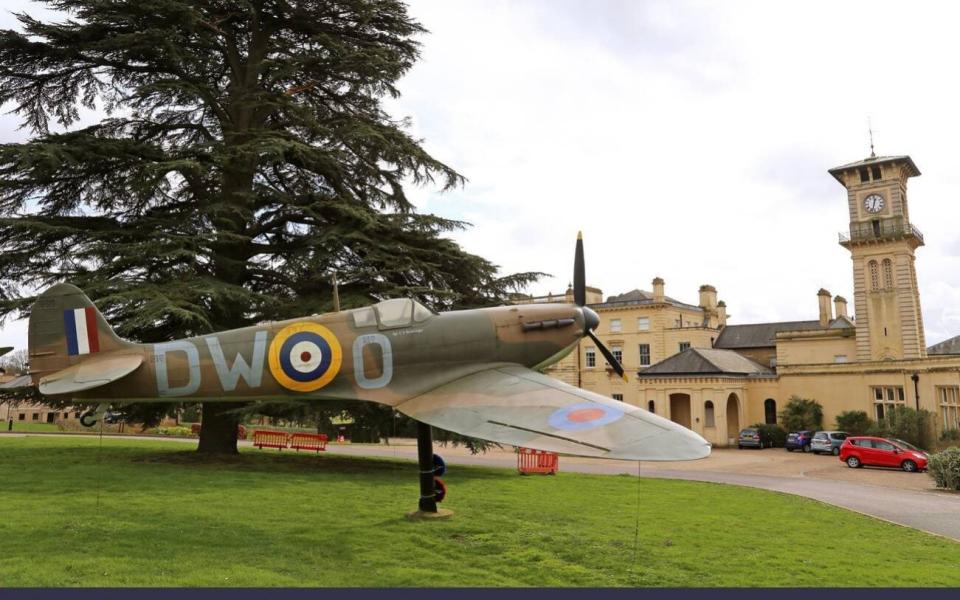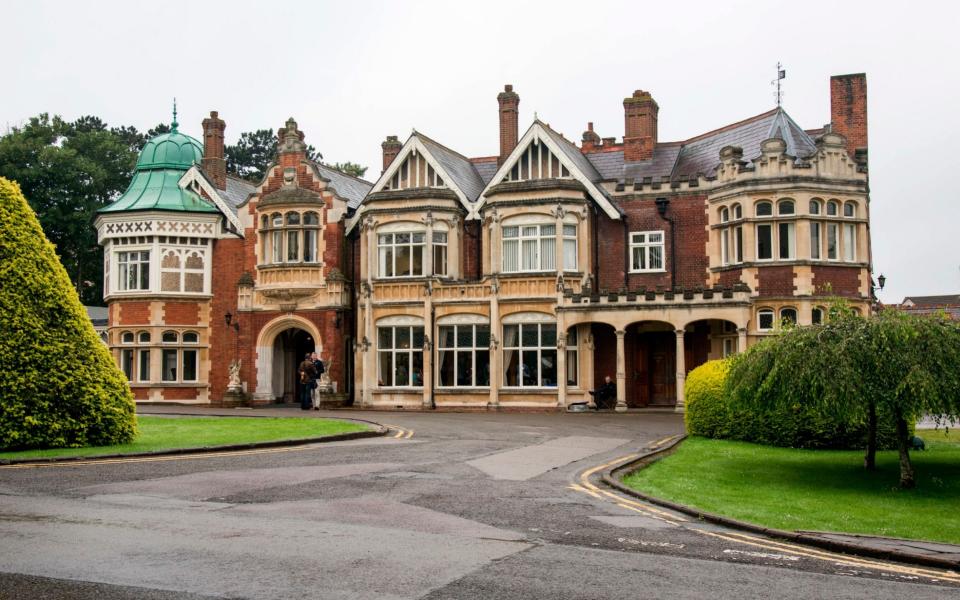Historian Dan Snow on the best Battle of Britain sites to visit this summer

Future generations, said the prime minister of the time, would look back upon that summer and judge that it had been the nation’s “finest hour”. We are those future generations, and you will not find many among us who would disagree with Winston Churchill’s prediction.
Eight decades ago, in the summer of 1940, German barges were massing along the French coast as Adolf Hitler prepared to transport troops across the Channel to invade Britain. To prevent the invading forces being bombed from the air, the Germans had to take control of British airspace. But for three months from July to September, Hitler’s plans were thwarted by almost 3,000 RAF pilots defending the skies over southern England.
“The Battle of Britain was the decisive turning point,” says the historian Dan Snow, “because Hitler was now guaranteed to face a two-front war, against the world’s largest empire and the Soviet Union. It was a war Germany could not possibly win.” After making a television series about the Battle of Britain for Channel 5, and having interviewed six survivors of the brave contingent of pilots known as The Few, Snow’s interest is deeply personal. “The Battle of Britain was the first battle of strategic importance fought in the air alone,” he says. “And it shows extraordinary new technology, whether that’s radar, or the fighter aircraft themselves, including the brand new Spitfire. And it’s a battle of individual contributions, of tireless effort by young British, Polish, Czech and other pilots, who flew sometimes five times a day.”
Tomorrow (12 July) is Battle of Britain Memorial Day, marking the 80th anniversary of the beginning of the battle, and Snow says we should allow ourselves a moment of pride. “Anniversaries are a moment that connect us with the passing of time. A moment to remember Britain in the summer of 1940, while the Americans were desperate to stay out of it, and the Soviets were effectively allies of Hitler, Britain and its Commonwealth and the Free French, Poles and Czechs, fought against fascism.” And the 80th anniversary is an opportunity – perhaps one of the last – to give thanks to the fast-vanishing generation who played their part as pilots, and also as ground crew, WAAFs, and plotters.
Dividing the Battle of Britain into three phases, Snow stresses that Hitler and Herman Goering played their hand very badly. “They were hoping Britain would make peace. And to prod that along, they used air power.” For the series of battles in July, the Luftwaffe predominantly attacked ships carrying food and ammunition along the coast.
When there was no softening in British public and political opinion, in early August, the Germans launched an all-out assault, trying to destroy the structures of the RAF so that they would then be able attack other targets with impunity. From mid-August onwards, the Luftwaffe bombed airfields and factories with intensity.

The next big change came on Sept 7, when Hitler became furious that the RAF had dared to bomb Berlin. The Führer ordered raids over London to maximise the Luftwaffe’s chances of destroying aircraft. “As with the whole of German history, it was about seeking a battle of annihilation.” The RAF took a terrible toll on German planes as they flew to and from London. By mid-September, Hitler had called off the invasion plans.
Snow is still unearthing surprising aspects of the battle. “The supposed national traits are reversed,” he observes. “The Germans were led by charismatic leaders who believed it was enough if they flew brilliantly. The British, led by Air Chief Marshal Hugh Dowding, were bureaucratic and intensely prepared. The Dowding System was the first co-ordinated air defence system, operating like a giant computer. And the Germans’ stupidity was striking: they could have attacked radar stations and blinded the RAF. The real story is one of a woefully inadequate air force having a go against a British opponent that was better prepared, led, equipped and trained than the Germans.”
To mark the 80th anniversary, Dan Snow will host the RAF Benevolent Fund’s Big Battle of Britain virtual quiz on Saturday 11 July at 8pm, alongside actress Sue Holderness. To sign up, click here
Dan’s Ten Top Battle of Britain Places in England
Imperial War Museum, Duxford
“Duxford is brilliant. They’ve got a mock-up of the Operations Room, which is really important. That’s where we understand this system Dowding employed. It’s unglamorous, but the Battle of Britain was the victory of a process, of a system, and at Duxford you get that sense. There’s all the aircraft, lots of Spitfires and Hurricanes. And it was an airfield, so it gives us the chance to watch flying aircraft.”
Duxford reopens on Aug 1.
Special Events:
The Ops Block: A Battle of Britain exhibition opens at Duxford on Sept 15, granting access to previously unseen Second World War rooms. Visitors will be able to step into the former nerve centre of RAF Duxford, and immerse themselves in the tension felt on the ground on Sept 15 1940.
Duxford Battle of Britain Airshow Weekend, Sept 18-20.
Duxford Battle of Britain Proms on Friday Sept 18 will feature afternoon flying entertainment, followed by The D-Day Darlings choir.
Battle of Britain Memorial, Capel-le-Ferne, Folkestone

“This a monument to the Few. It’s very moving. It’s a memorial on the top of the White Cliffs, between Folkestone and Dover, and it’s just a beautiful place – a memorial more than a museum, essentially. It’s a wonderful place for reflection, with beautiful views looking out towards France, and a sculpture of one of the Few sitting there looking up to the sky, and the names of all those who died from Fighter Command etched on the wall. I find it a wonderful place.”
Special Events:
Virtual Commemoration of the 80th Anniversary of the Battle of Britain, today. Unique footage of the Battle of Britain Memorial Flight in action in an online commemoration of the bravery and sacrifice of the Few in 1940. Includes music from the Band of the RAF Regiment: youtube.com/battleofbritainmemorial; facebook.com/rememberthefew).
Site may reopen tomorrow, check battleofbritainmemorial.org
RAF Museum, Cosford
“I love Cosford: they’ve got all the key aircraft. It’s a fantastic entry to the story of the Battle of Britain. I was there a few years ago with Fighter Command ace Wing Commander Tom Neil, who sadly died two years ago. He shot down 14 enemy aircraft. He told me he was so exhausted from flying up to five missions a day that he fell asleep in the cockpit on landing at base. Cosford will give you a blow-by-blow account of the campaign. It’s a great place to get a really comprehensive overview.”
Hughenden, High Wycombe

“Hughenden is a very special place. Maps were something the Germans were bad at: they had terrible maps and terrible intelligence. If bombs are going to work. they need to be based on accurate intelligence.”
Hughenden Manor’s top-secret role in the Second World War only came to light in 2004, when a visitor revealed that Disraeli’s former home was code-named Hillside and housed a 150 strong team of cartographers and artists, producing accurate bombing target maps from aerial photographs.
Produced in white and magenta, to be visible in low light during night time bombing raids, the maps contained only the key geographic features that would help navigators identify the target. The Battle of Britain underlined the need for accurate offensive bombing, and Hughenden was requisitioned by the Air Ministry in 1941.
The manor garden, parkland, café and lavatories are open. The National Trust hopes that the house itself will reopen, possibly partially, in the late summer.
nationaltrust.org.uk/hughenden
Bentley Priory, Stanmore
“A vital place to visit. It tells the story of Hugh Dowding, who was the commander of everything in the Battle of Britain, and also how he interacted.
“Bentley Priory is a vital node in the system of air defence for the UK. It’s in a glorious position, set above London, and you get to see Dowding’s office as it was. It’s a place to commune with him, also a place to understand how the decisions he made affected the wider battle.”
Bentley Priory reopens on July 18, initially only on Saturdays, 10am-4pm. An 80th anniversary exhibition, Battle of Britain Illuminated, features colourised photographs.
Shuttleworth, Biggleswade
“Shuttleworth is fun. There will always be flying there, as it is a private aerodrome, so if you want to see warbirds flying, go to Shuttleworth. Richard Shuttleworth, in whose memory the collection was founded, was killed in an RAF night training exercise during the Battle of Britain.
“He was in the Volunteer Reserve, and is the sort of character early aviation is riddled with – these motor car enthusiasts, these playboys – and many of them went on to play roles in the Battle of Britain.”
Special Event:
Shuttleworth Drive In Airshow, July 18 – display scheduled to include a Spitfire.
shuttleworth.org/the-collection
Kent Battle of Britain Museum, Folkestone
“A great favourite of mine; it is one of the biggest collections of Battle of Britain artefacts and memorabilia in the UK. I’ve been down there a fair bit this winter. They’ve got pieces of almost every single plane shot down in the Battle of Britain that has been recovered in that museum. And they’re on a vital airfield – RAF Hawkinge – so they have original Battle of Britain buildings dotted around.”
Bletchley Park, Milton Keynes

“I find the ‘Sigint’ [signals intelligence] war completely terrifying because it was so complicated. I’d go to the main house at Bletchley, it was there that the Battle of Britain work was done. The lower-grade encryption system was broken early in the war, so Luftwaffe communications were quite insecure, and Bletchley was still mainly running from the main house. Hut 6 went on to specialise in Luftwaffe messages.
“You can also go and look at the stable yard and garages, where Alan Turing was sitting in his attic, having food sent up to him in baskets which he hauled up on a rope, as he was turning over how to break Enigma with a data machine.”
International Bomber Command Centre, Lincoln
“Bomber Command are the forgotten heroes of the Battle of Britain. They flew every night, in dangerous and unequal missions, to hit the Luftwaffe’s airfields in northern France. The casualties were absolutely extraordinary. They fought with extreme bravery, on sometimes hopeless missions over the Continent, doing their best to disrupt the German attacks before they were launched. The Spire and Walls of Names at IBCC is a very moving place. And it’s mostly outside, so perfect for summer.”
Swingate, Dover
“Dover has three large radar towers built for the Battle of Britain. Radar operators spotted German raids gathering over France, across the Channel. These would then be phoned in on a huge network of telephone lines to a central clearing station, such as Bentley Priory or Uxbridge. They would be corroborated by observers on the ground, people with binoculars on the cliffs of Dover, and elsewhere in Sussex and Hampshire.
“Then Dowding’s coordinators were able to dispatch only limited numbers of aircraft, saving pilot time, fuel, and wear and tear on the aircraft. So Swingate, just outside Dover, is a very special place, and the towers are open all the time, just out in the field. Just go and look at them, it’s very special.”
The Swingate radar towers can be seen from the White Cliffs Coastal Path from Dover to St Margaret’s at Cliffe.
Dan Snow’s series Battle of Britain: 3 Days That Saved the Nation, is available on demand via Channel 5

 Yahoo News
Yahoo News 
